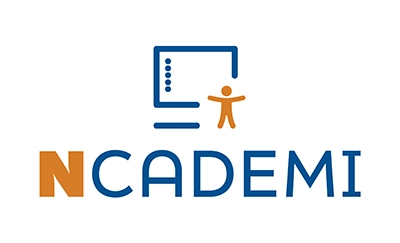Accessible Format Acquisition
Accessible formats are provided to students with disabilities when the standard version of an educational material is inaccessible for them. The need to provide accessible formats of print materials is common in schools. For example, print materials can be converted to several types of accessible formats, including digital text, large print, braille, and audio. Students with a range of disabilities need accessible formats to access the general education curriculum. Locating and acquiring accessible formats can be time-consuming. This page offers resources to get started.
NCADEMI is developing more resources to help educators create accessible digital educational materials. What would be helpful to you? Please contact us!
Resources
Coordinating with the NIMAC: What It Means & Why It’s Important
Watch a recorded webinar co-hosted by NCADEMI and the NIMAC. Important questions are addressed, such as “What does it mean to coordinate with the NIMAC?,” “Why is it beneficial for states to coordinate with the NIMAC?,” and “Does the NIMAC receive digital instructional materials?”
Find Your State Accessible Educational Materials (AEM) Contact
State AEM Contacts provide assistance and information on acquiring accessible formats for eligible students.
More to the Myths and Facts: Addressing Accessible Educational Materials in the 2024 Assistive Technology Guidance
The purpose of this document is to add the relevance of accessible educational materials to each issue raised by the 28 Myths and Facts presented in the 2024 Assistive Technology (AT) Guidance published by the U.S. Department of Education. This resource is especially helpful to IEP teams that need guidance on considering a student’s need for both AT and accessible formats. While the full document is informative for anyone learning about accessible formats, information specific to locating and acquiring accessible formats can be found in Myth/Fact 19.
NIMAS & NIMAC: What State and Local Educational Agencies Need to Know
This policy brief explains the purpose of the National Instructional Materials Access Standard (NIMAS) and the National Instructional Materials Access Center (NIMAC). Together, NIMAS and NIMAC provide a way for states and school districts to provide accessible formats in a timely manner.
